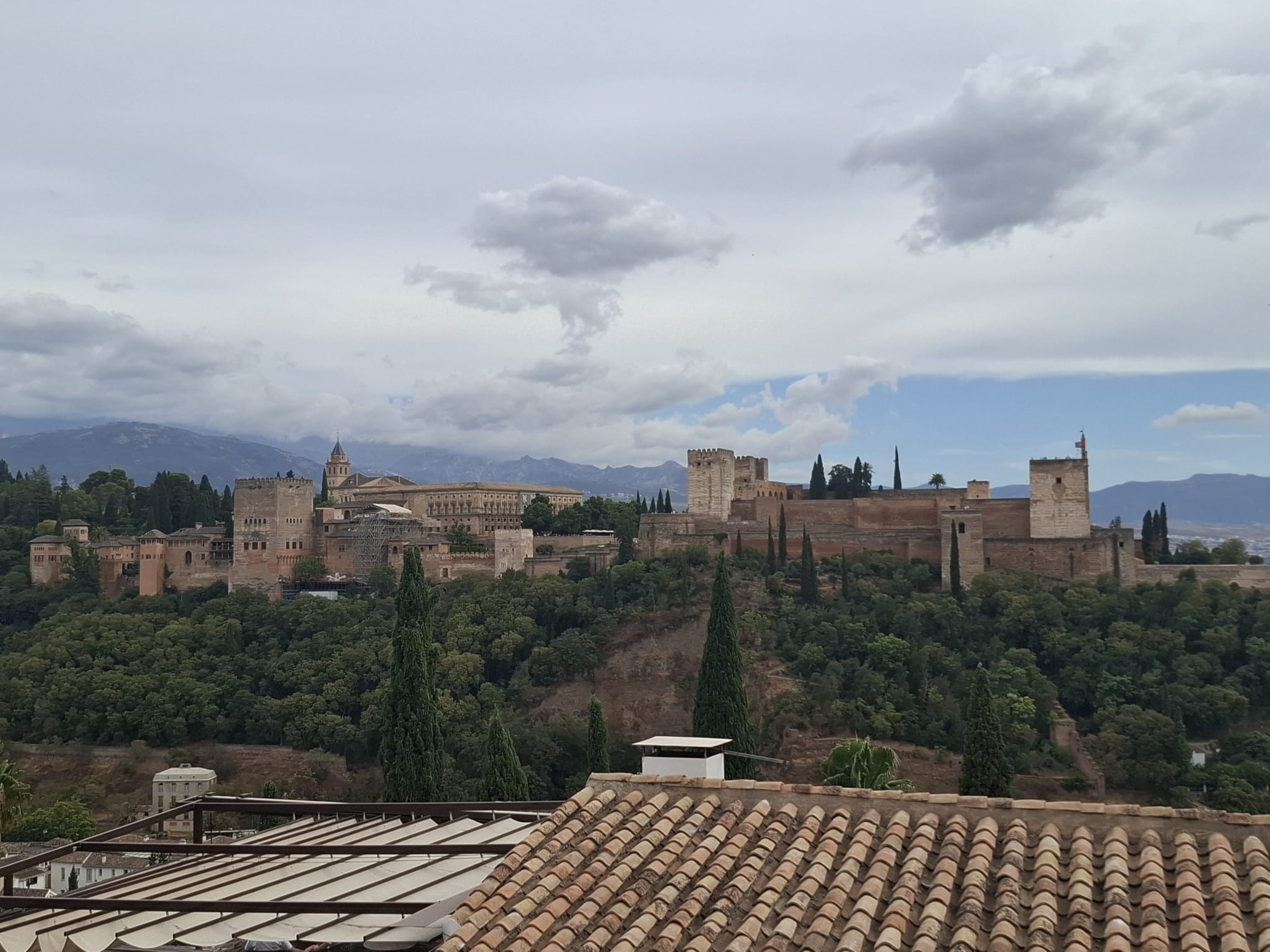
Spanish history is complicated, but often stunningly beautiful, and the Palace of Alhambra is a perfect example. I visited Granada hoping to go inside, but tickets were sold out during my short trip. I was able to explore the surrounding gardens, but the best view I had of this gorgeous 13th-century palace was from the Mirador de San Nicolas viewpoint.
That meant climbing through the Albaicín neighborhood, which still largely follows the layout of streets from the 13th century.
The Alhambra palace complex began with Muhammad I Ibn al-Ahmar, the first ruler of the Nasrid dynasty and the Emirate of Granada. He came to power through an alliance with Fernando III of Castile, assisting in the Reconquista. While not present, he was declared the new ruler of Granada after a rebellion overthrew the previous leader. He quickly returned to the city, made an agreement with Fernando, and began construction on the Alhambra. This agreement, along with Castile’s other conflicts, helped stabilize the political landscape of the Iberian Peninsula until the late 1400s.
Luckily, the Alhambra wasn’t damaged by fighting, as it was surrendered peacefully. This means much of its original beauty, both inside and outside, has been preserved.
Thinking about how to approach this, I explored the surrounding woods – there are lovely gardens and paths – and it was surprisingly difficult, even for someone in good shape like me. Trying to run through there with all the necessary equipment would be impossible, no matter how prepared you are. Setting up siege weapons would also be incredibly challenging because the fortress is so much higher than the surrounding terrain.
As a huge fan of the Alhambra, I always think about the incredible music it’s inspired! One piece, called ‘Recuerdos de la Alhambra’ – which means ‘Memories of the Alhambra’ – is just breathtaking. It was written in the 1800s by a composer named Francisco de Asis Tárrega, and it really captures the feeling of being there.
It’s kinda wild, but nobody actually *knows* how Tárrega, the guy who wrote this piece, originally played the trémolo – that super famous, fast picking technique. There are no recordings of him doing it! Some players, like Narciso Yepes, go for blazing speed, while others, like Pablo Sainz-Villegas, play it slower and more deliberately. Apparently, Andrés Segovia, who’s considered the greatest classical guitarist ever, was supposed to learn the trémolo directly from Tárrega, but sadly, Tárrega passed away in 1909, and that knowledge went with him. So, we’re all just kind of guessing how it *should* sound, which is pretty cool and a little sad at the same time.
Now, let me tell you about the Ronda Bridge. It honestly feels like something straight out of the Dark Souls video game – it’s definitely one of the most atmospheric places I’ve ever been.
Read More
- Byler Confirmed? Mike and Will’s Relationship in Stranger Things Season 5
- One-Way Quantum Streets: Superconducting Diodes Enable Directional Entanglement
- All Exploration Challenges & Rewards in Battlefield 6 Redsec
- Quantum Circuits Reveal Hidden Connections to Gauge Theory
- 6 Pacifist Isekai Heroes
- Top 8 UFC 5 Perks Every Fighter Should Use
- Every Hisui Regional Pokémon, Ranked
- CRO PREDICTION. CRO cryptocurrency
- ENA PREDICTION. ENA cryptocurrency
- Top 8 Open-World Games with the Toughest Boss Fights
2025-10-07 17:43